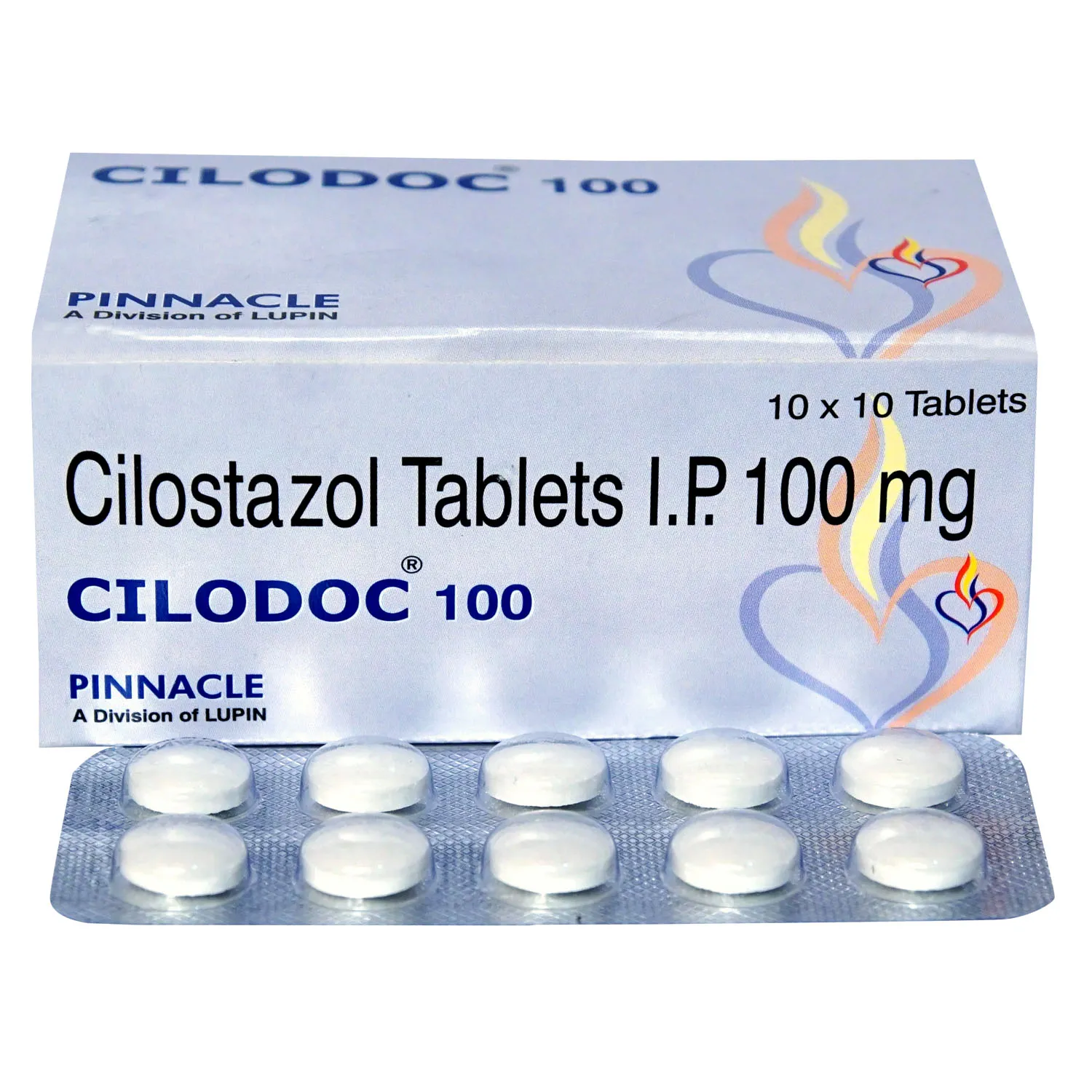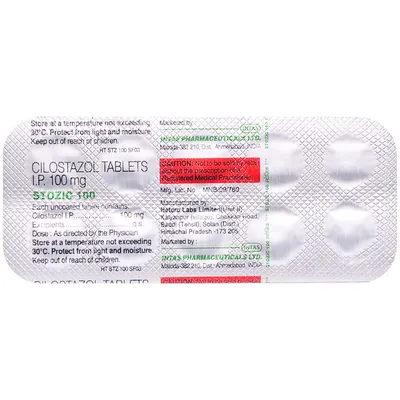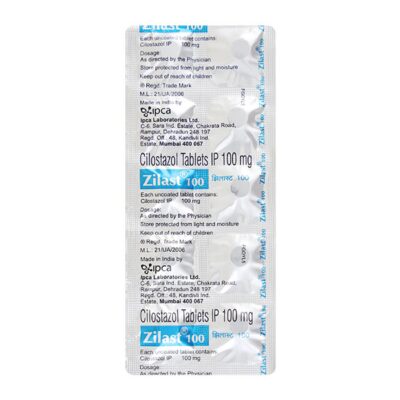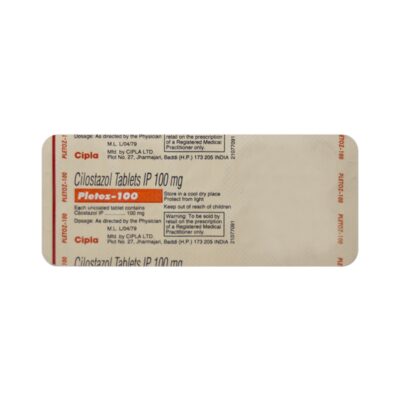🦵💊💓 Cilostazol 100mg Tablet: Vascular Vasodilator for Pain-Free Walking in PAD
Cilostazol 100mg is a vasodilator and antiplatelet agent primarily used to treat intermittent claudication, a condition caused by peripheral arterial disease (PAD) where reduced blood flow to the legs results in pain while walking. Cilostazol helps improve blood circulation, reduce blood clotting, and increase walking distance without pain, thereby enhancing quality of life in patients with chronic circulatory problems.
🔬 Mechanism of Action
Cilostazol is a phosphodiesterase III (PDE3) inhibitor, which works through multiple mechanisms:
-
Inhibits platelet aggregation: reducing the risk of blood clot formation
-
Promotes vasodilation: widens arteries, especially in the legs, improving oxygen supply
-
Improves lipid metabolism: slightly lowers triglycerides and raises HDL cholesterol
-
Increases cyclic AMP (cAMP) in platelets and blood vessels, reducing vascular resistance and enhancing blood flow
The net result is better oxygen delivery to muscle tissue, reduced cramping, and improved walking ability in patients with PAD.
📌 Indications and Uses
Cilostazol 100mg is primarily prescribed for:
-
Intermittent claudication due to peripheral arterial disease
-
Secondary prevention of stroke or cardiovascular events (in select cases, off-label)
-
Occasionally used in Buerger’s disease and Raynaud’s phenomenon (off-label)
Its use is focused on increasing symptom-free walking distance and relieving leg discomfort in patients with poor peripheral circulation.
💊 Dosage and Administration
-
Recommended dose: 100mg twice daily, at least 30 minutes before or 2 hours after meals to improve absorption and reduce GI side effects
-
Onset of benefit may take 2–4 weeks, with full effects typically seen in 8–12 weeks
-
Therapy should be continued only if there’s clinical improvement after a few weeks
⚠️ Precautions and Warnings
-
Contraindicated in:
-
Heart failure (due to increased mortality risk from PDE3 inhibitors)
-
History of hemorrhagic disorders or active bleeding
-
Severe renal or hepatic impairment
-
-
Use cautiously in:
-
Arrhythmias
-
Patients taking antiplatelets (e.g., aspirin, clopidogrel) or anticoagulants
-
Baseline ECG, liver and kidney function tests, and bleeding risk assessment are advised before starting therapy.
🤒 Side Effects
Common:
-
Headache
-
Diarrhea
-
Dizziness
-
Palpitations
-
Nausea
Less common but serious:
-
Tachycardia or irregular heartbeat
-
Low blood pressure
-
Bleeding complications (especially if on blood thinners)
-
Thrombocytopenia (rare)
Discontinue and seek medical advice if symptoms like chest pain, severe headache, or excessive bleeding occur.
🔄 Drug Interactions
-
Increased risk of side effects when taken with:
-
Aspirin, clopidogrel, warfarin (enhanced bleeding risk)
-
Strong CYP3A4 inhibitors (e.g., ketoconazole, erythromycin) – may raise Cilostazol levels
-
Grapefruit juice – avoid, as it affects drug metabolism
-
🧊 Storage Instructions
-
Store at 15–30°C in a cool, dry place
-
Protect from light and moisture
-
Keep out of reach of children
📝 Conclusion
Cilostazol 100mg tablet offers effective symptom relief in patients with intermittent claudication, improving walking distance and limb blood flow without the need for invasive procedures. Though not a cure for PAD, it provides significant quality-of-life benefits when used under medical supervision, especially in patients who do not respond to lifestyle changes alone. Proper dosing, monitoring, and avoidance in heart failure patients are key to safe and effective use.
Note: This information is intended for educational purposes and should not replace professional medical advice. Always consult a healthcare provider for personalized guidance.





Reviews
There are no reviews yet.